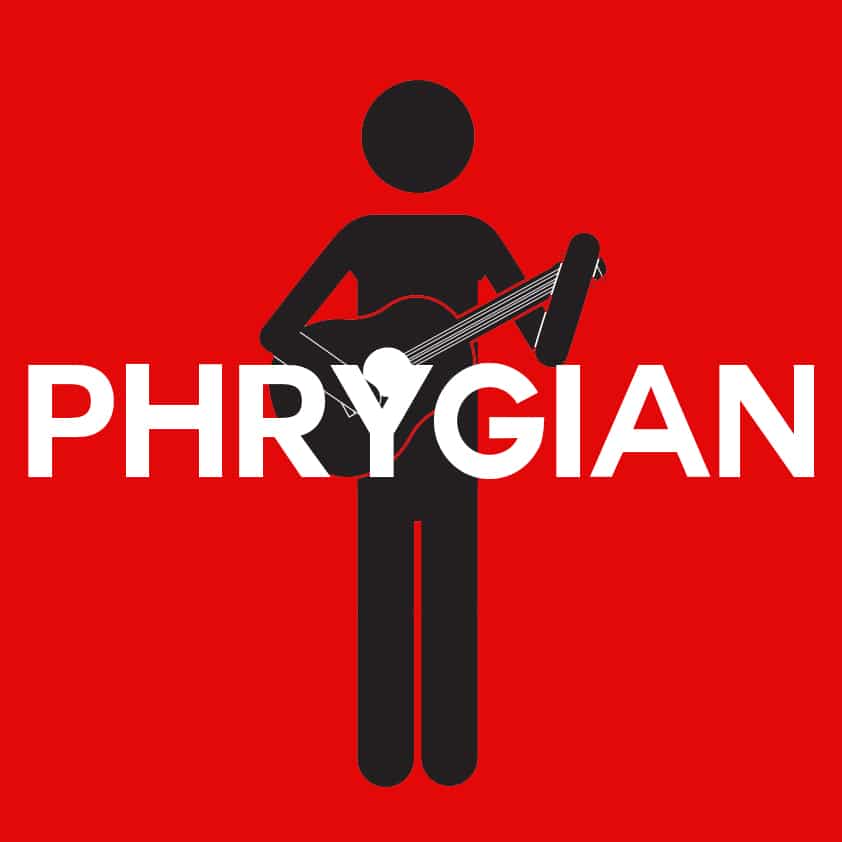Background
One of the ancient musical modes has origins that can be traced back to a tribe called the Phrygians, who lived around 600BC.
Personally, whenever I hear phrases like ‘Ancient Musical Modes’, I immediately think of that Stonehenge scene in the Spinal Tap movie. Must be a guitarist thing.
Historians will tell you about the wars the Phrygians fought – their victories and defeats, but I find that the most fascinating thing about the tribe was the distinctive and unusual flavour to their music.
Contributed by Mark Smith for the Roland Australia Blog
The Phrygian Flavour
It is important to point out that in modern music, all of the modes are far more than just a sequence of notes that you can use to solo – they get their unique flavour from the way they fit in with the underlying chord progressions.
The emotions conveyed by the music of the original Phrygian tribe are quite hard to describe. Think flamenco with attitude, but not fast. Of course, these days shredders will take the mode and… well… shred, so it can be fast. Very fast. That’s progress for you.
Many people will tell you the Phrygian mode is similar to the Aeolian one, with one note changed. However, that is exactly what gives the Phrygian mode a totally different feeling.
When you only have a few notes to choose from in each mode – every one that gets changed is significant! The ‘trick’ when soloing is to emphasize the notes that are different, so keep that in mind when you practice your Phrygian solos. Even at high speeds.
For each mode, I like to include well known song examples, but it is hard to find an instantly recognisable song that is based around the Phrygian modal structure, as it is quite unusual (note to self: try and write one).
However, there are plenty of examples of Phrygian guitar solos such as ‘Symphony of Destruction’ by Megadeth, ‘War’ by Joe Satriani, ‘Wherever I May Roam’ by Metallica and lots of Dream Theater stuff.
The Theory
In the first ‘Introduction to Modes’ article, we saw how the Phrygian mode is the 3rd mode of the relative major scale (starts and ends on the third note of a key).
For example, if we are in the key of C, the notes of the major scale would be C, D, E, F, G, A, B, C. The Phrygian mode contains exactly the same notes, but starts and ends on the 3rd note, so it would be E, F, G, A, B, C, D, E and look like this:
Since the E Phrygian mode contains exactly the same notes of the C major scale, why bother with a fancy name? Good question! Because the sound of the mode depends on the underlying chords. Why? Well, first you need to understand how the Phrygian mode compares to its relative major scale.
E Major scale: E, F#, G#, A, B, C#, D#, E.
E Phrygian mode: E, F, G, A, B, C, D, E.
You can see from the diagram above that the E Phrygian mode differs from the E major scale in the following ways; the 2nd, 3rd, 6th and 7th notes have been flattened (the F#, G#, C# and D# notes become F G C D).
For this reason, the Phrygian mode is often written as 1 ♭2 ♭3 4 5 ♭6 ♭7.
As mentioned earlier, the Phrygian and Aeolian modes are similar, but it is the differences that give them their unique identities. For the Phrygian mode, it is the ♭2 that makes it very unusual – and it is the stand out note when compared to the Aeolian.
When to Use the Phrygian Mode
Typically, a guitarist would do little more than simply work out the overall key of the song before starting to solo. However, using modes requires you to think a little differently – break down the song into sections (verse, chorus, middle, etc), take a look at the chord structure for each section and then choose a mode.
When we are in the key of C, the Phrygian mode starts on E and contains the notes E F G A B C D E so, using basic chord theory, if we take the 1st, 3rd, 5th, and 7th notes (E G B D), we have an Em7 chord.
This means that when you are playing in the key of C, the magic of the Phrygian mode happens when the E minor chord (or Em7) is at the heart of the progression. For example, if you see a chord progression like Em7 to F to G back to Em7, reach for the Phrygian pattern.
Generically speaking, the Phrygian mode will work best when the chord progressions revolve around the IIIm7 chord (or extensions like IIIm9 etc) of any key. I’m guessing that by now you know why I can’t find an instantly recognisable pop song as an example!
If you find all that theory a bit confusing, don’t fret (bad pun intended), sometimes it is easier to just let your ears be the guide and your fingers play. You will hear it when the mode is used in the right context.
Cue the music and thank Roberto Restuccia for creating a backing track and putting together a short video example that shows the Phrygian mode in all its glory.
Video Example
In the video below, guitarist Roberto Restuccia demonstrates the ‘very hard to describe’ Phrygian mode in context. If you want to hear the Lydian and Phrygian modes side by side, jump to the video here :
Try it Out for Yourself
Now for the fun part. Download the backing track, print out the fretboard diagram and try it out for yourself.
After a couple of practice runs, feel free to contact us if you come up with a word that aptly describes the unique melting pot of emotions that the Phrygian mode embodies. Regardless, you can now impress your band mates by throwing fancy new words like ‘Phrygian’ into conversation!
DOWNLOAD► C Phrygian Mode Positions
Related Articles
Ionian Mode
Dorian Mode
Lydian Mode
Aeolian Mode
Locrian Mode
Mixolydian Mode









